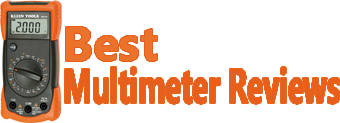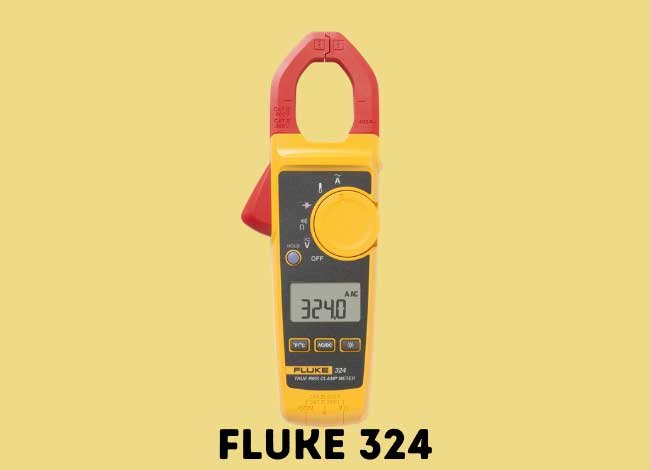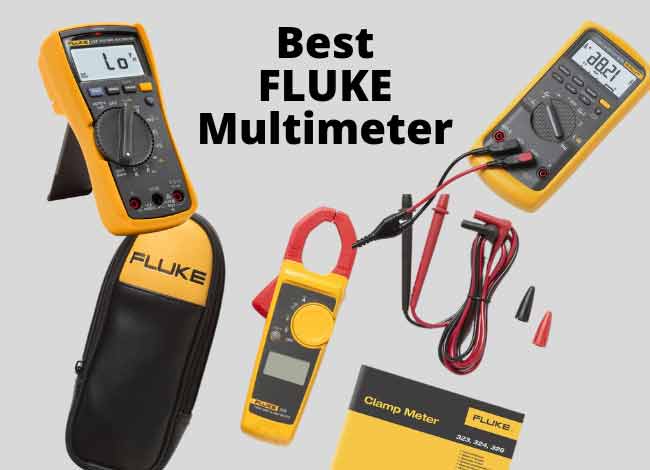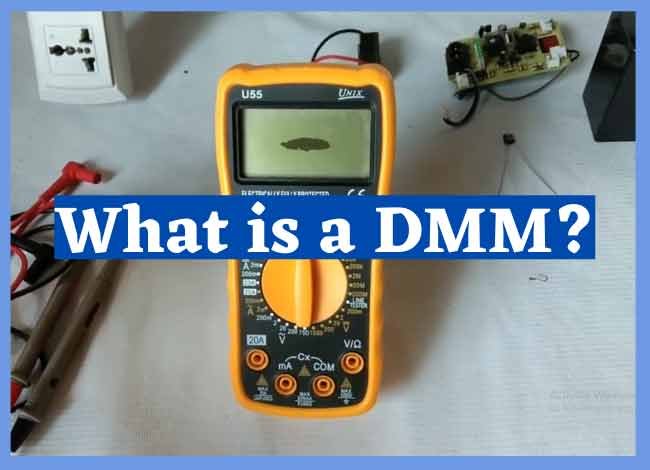Last Updated on September 2, 2025
The Fluke 754 Documenting Process Calibrator with HART Communication is one of the most versatile tools designed for process professionals. It combines calibration, HART communication, and documentation in a single handheld device, making it ideal for industries where accuracy, efficiency, and compliance are critical. Whether you work in oil & gas, power, chemical plants, or process automation, the Fluke 754 ensures reliable calibration with advanced features.
Key Features of Fluke 754
-
HART Communication Built-In – Directly communicate with HART smart transmitters.
-
Multifunction Calibrator – Measure and source voltage, current, resistance, frequency, pressure, and temperature.
-
Data Logging and Documentation – Automatically capture results and upload/download to PC.
-
Portable and Rugged – Designed for field use with robust casing.
-
User-Friendly Interface – Easy navigation menus, backlit display, and intuitive controls.
-
Compliance Ready – Helps meet ISO 9000, FDA, EPA, and OSHA requirements.
Specifications: Fluke 754 Documenting Process Calibrator-HART
| Measurement Accuracy | |||||
| Voltage DC | Range/ Resolution | 1 Year | 2 Years | ||
| 100.000 mV | 0.02% + 0.005 mV | 0.03% + 0.005 mV | |||
| 3.00000 V | 0.02% + 0.00005 V | 0.03% + 0.00005 V | |||
| 30.0000 V | 0.02% + 0.0005 V | 0.03% + 0.0005 V | |||
| 300.00 V | 0.05% + 0.05 V | 0.07% + 0.05 V | |||
| Voltage AC | 3.000 V (40 Hz to 500 Hz) / 0.001 V | 0.5% + 0.002 V | 1.0% + 0.004 V | ||
| 30.00 V (40 Hz to 500 Hz) / 0.01 V | 0.5% + 0.02 V | 1.0% + 0.04 V | |||
| 300.0 V (40 Hz to 500 Hz) / 0.1 V | 0.5% + 0.2 V | 1.0% + 0.2 V | |||
| Current DC | 30.000 mA | 0.01% + 5 uA | 0.015% + 7 uA | ||
| 110.00 mA | 0.01% + 20 uA | 0.015% + 30 uA | |||
| Resistance | 10.000 Ω | 0.05% + 50 mΩ | 0.07% + 70 mΩ | ||
| 100.00 Ω | 0.05% + 50 mΩ | 0.07% + 70 mΩ | |||
| 1.0000 kΩ | 0.05% + 500 mΩ | 0.07% + 0.5 Ω | |||
| 10.000 kΩ | 0.1% + 10 Ω | 0.15% + 15 Ω | |||
| Frequency | 1.00 to 110.00 Hz / 0.01 Hz | 0.05 Hz | |||
| 110.1 to 1100.0 Hz / 0.1 Hz | 0.5 Hz | ||||
| 1.101 to 11.000 kHz / 0.001 kHz | 0.005 kHz | ||||
| 11.01 to 50.00 kHz / 0.01 kHz | 0.05 kHz | ||||
| Source Accuracy | |||||
| 1 Year | 2 Years | ||||
| Voltage DC | 100.000 mV | 0.01% + 0.005 mV | 0.015% + 0.005 mV | ||
| 1.00000 V | 0.01% + 0.00005 V | 0.015% + 0.0005 V | |||
| 15.0000 V | 0.01% + 0.0005 V | 0.015% + 0.0005 V | |||
| Current DC | 22.000 mA (source) | 0.01% + 0.003 mA | 0.02% + 0.003 mA | ||
| Current sink (simulate) | 0.02% + 0.007 mA | 0.04% + 0.007 mA | |||
| Resistance | 10.000 Ω | 0.01% + 10 mΩ | 0.015% + 15 mΩ | ||
| 100.00 Ω | 0.01% + 20 mΩ | 0.015% + 30 mΩ | |||
| 1.0000 kΩ | 0.02% + 0.2 Ω | 0.03% + 0.3 Ω | |||
| 10.000 kΩ | 0.02% + 3 Ω | 0.03% + 5 Ω | |||
| Frequency | 0.1 to 10.99 Hz | 0.01 Hz | |||
| 0.01 to 10.99 Hz | 0.01 Hz | ||||
| 11.00 to 109.99 Hz | 0.1 Hz | ||||
| 110.0 to 1099.9 Hz | 0.1 Hz | ||||
| 1.100 to 21.999 kHz | 0.002 kHz | ||||
| 22.000 to 50.000 kHz | 0.005 kHz | ||||
| Technical Data | |||||
| Data log functions | Measure functions | Voltage, current, resistance, frequency, temperature, pressure | |||
| Reading rate | 1, 2, 5, 10, 20, 30, or 60 readings/minute | ||||
| Maximum record length | 8000 readings (7980 for 30 or 60 readings/minute) | ||||
| Ramp functions | Source functions | Voltage, current, resistance, frequency, temperature | |||
| Rate | 4 steps/second | ||||
| Trip detect | Continuity or voltage (continuity detection not available when sourcing current) | ||||
| Loop power function | Voltage | Selectable, 26 V | |||
| Accuracy | 10%, 18 V minimum at 22 mA | ||||
| Maximum current | 25 mA, short circuit protected | ||||
| Maximum input voltage | 50 V DC | ||||
| Step functions | Source functions | Voltage, current, resistance, frequency, temperature | |||
| Manual step | Selectable step, change with arrow buttons | ||||
| Autostep | Fully programmable for function, start delay, stepvalue, time per step, repeat | ||||
| Environmental Specifications | |||||
| Operating temperature | -10°C to +50°C | ||||
| Storage temperature | -20°C to +60°C | ||||
| Dust/water resistance | Meets IP52, IEC 529 | ||||
| Operating altitude | 3000 m above mean sea level (9842 ft) | ||||
| Safety Specifications | |||||
| Agency approvals | CAN/CSA C22.2 No 1010.1-92, ASNI/ISA S82.01-1994, UL3111, and EN610-1:1993 | ||||
| Mechanical and General Specifications | |||||
| Size | 136 x 245 x 63 mm (5.4 x 9.6 x 2.5 in) | ||||
| Weight | 1.2 kg (2.7 lb) | ||||
| Batteries | Internal Battery Pack Li-ion: 7.2V,4400mAh, 30 Wh | ||||
| Battery life | >8 hours typical | ||||
| Battery replacement | Replace without opening calibrator; no tools required | ||||
| Side port connections | Pressure module connector | ||||
| USB Connector to interface to your PC | |||||
| Digital instrument (HART) connector | |||||
| Connection for optional battery charger/eliminator | |||||
| Data storage capacity | 1 week of calibration procedures results | ||||
| 90 day specifications | The standard specification interval for the 750 Seriesare 1 and 2 years. | ||||
| Typical 90 day measurement and source accuracy can be estimated by dividing the one year “% of reading” or “% of output” specifications by 2. | |||||
| Floor specifications, expressed as “% of full scale” or “counts” or “ohms” remain constant. | |||||
| Temperature, Resistance Temperature Detectors | |||||
| Degrees or % of reading – Type (α) | Range °C | Measure °C1 | |||
| 1 year | 2 year | ||||
| 100 Ω Pt (385) | -200 to 100 100 to 800 |
0.07°C 0.02% + 0.05°C |
0.14°C 0.04% + 0.10°C |
||
| 200 Ω Pt (385) | -200 to 100 100 to 630 |
0.07°C 0.02% + 0.05°C |
0.14°C 0.04% + 0.10°C |
||
| 500 Ω Pt (385) | -200 to 100 100 to 630 |
0.07°C 0.02% + 0.05°C |
0.14°C 0.04% + 0.10°C |
||
| 1000 Ω Pt (385) | -200 to 100 100 to 630 |
0.07°C 0.02% + 0.05°C |
0.14°C 0.04% + 0.10°C |
||
| 100 Ω Pt (3916) | -200 to 100 100 to 630 |
0.07°C 0.02% + 0.05°C |
0.14°C 0.04% + 0.10°C |
||
| 100 Ω Pt (3926) | -200 to 100 100 to 630 |
0.08°C 0.02% + 0.06°C |
0.16°C 0.04% + 0.12°C |
||
| 10 Ω Cu (427) | -100 to 260 | 0.2°C | 0.4°C | ||
| 120 Ω Ni (672) | -80 to 260 | 0.1°C | 0.2°C | ||
| Source current | Source °C | Allowable current2 | |||
| 1 year | 2 year | ||||
| 1 mA | 0.05°C 0.0125% + 0.04°C |
0.10°C 0.025% + 0.08°C |
0.1 mA to 10 mA | ||
| 500 μA | 0.06°C 0.017% + 0.05°C |
0.12°C 0.034% + 0.10°C |
0.1 mA to 1 mA | ||
| 250 μA | 0.06°C 0.017% + 0.05°C |
0.12°C 0.034% + 0.10°C |
0.1 mA to 1 mA | ||
| 150 μA | 0.06 C 0.017% + 0.05°C |
0.12 C 0.034% + 0.10°C |
0.1 mA to 1 mA | ||
| 1 mA | 0.05°C 0.0125% + 0.04°C |
0.10°C 0.025% + 0.08°C |
0.1 mA to 10 mA | ||
| 1 mA | 0.05°C 0.0125% + 0.04°C |
0.10°C 0.025% + 0.08°C |
0.1 mA to 10 mA | ||
| 3 mA | 0.2°C | 0.4°C | 0.1 mA to 10 mA | ||
| 1 mA | 0.04°C | 0.08°C | 0.1 mA to 10 mA | ||
| 1. For two and three-wire RTD measurements, add 0.4°C to the specifications. 2. Supports pulsed transmitters and PLCs with pulse times as short as 1 ms |
|||||
| Temperature, Thermocouples | |||||
| Type | Source °C | Measure °C | Source °C | ||
| 1 year | 2 years | 1 year | 2 years | ||
| E | -250 to -200 | 1.3 | 2.0 | 0.6 | 0.9 |
| -200 to -100 | 0.5 | 0.8 | 0.3 | 0.4 | |
| -100 to 600 | 0.3 | 0.4 | 0.3 | 0.4 | |
| 600 to 1000 | 0.4 | 0.6 | 0.2 | 0.3 | |
| N | -200 to -100 | 1.0 | 1.5 | 0.6 | 0.9 |
| -100 to 900 | 0.5 | 0.8 | 0.5 | 0.8 | |
| 900 to 1300 | 0.6 | 0.9 | 0.3 | 0.4 | |
| J | -210 to -100 | 0.6 | 0.9 | 0.3 | 0.4 |
| -100 to 800 | 0.3 | 0.4 | 0.2 | 0.3 | |
| 800 to 1200 | 0.5 | 0.8 | 0.3 | 0.3 | |
| K | -200 to -100 | 0.7 | 1.0 | 0.4 | 0.6 |
| -100 to 400 | 0.3 | 0.4 | 0.3 | 0.4 | |
| 400 to 1200 | 0.5 | 0.8 | 0.3 | 0.4 | |
| 1200 to 1372 | 0.7 | 1.0 | 0.3 | 0.4 | |
| T | -250 to -200 | 1.7 | 2.5 | 0.9 | 1.4 |
| -200 to 0 | 0.6 | 0.9 | 0.4 | 0.6 | |
| 0 to 400 | 0.3 | 0.4 | 0.3 | 0.4 | |
| B | 600 to 800 | 1.3 | 2.0 | 1.0 | 1.5 |
| 800 to 1000 | 1.0 | 1.5 | 0.8 | 1.2 | |
| 1000 to 1820 | 0.9 | 1.3 | 0.8 | 1.2 | |
| R | -20 to 0 | 2.3 | 2.8 | 1.2 | 1.8 |
| 0 to 100 | 1.5 | 2.2 | 1.1 | 1.7 | |
| 100 to 1767 | 1.0 | 1.5 | 0.9 | 1.4 | |
| S | -20 to 0 | 2.3 | 2.8 | 1.2 | 1.8 |
| 0 to 200 | 1.5 | 2.1 | 1.1 | 1.7 | |
| 200 to 1400 | 0.9 | 1.4 | 0.9 | 1.4 | |
| 1400 to 1767 | 1.1 | 1.7 | 1.0 | 1.5 | |
| C | 0 to 800 | 0.6 | 0.9 | 0.6 | 0.9 |
| 800 to 1200 | 0.8 | 1.2 | 0.7 | 1.0 | |
| 1200 to 1800 | 1.1 | 1.6 | 0.9 | 1.4 | |
| 1800 to 2316 | 2.0 | 3.0 | 1.3 | 2.0 | |
| L | -200 to -100 | 0.6 | 0.9 | 0.3 | 0.4 |
| -100 to 800 | 0.3 | 0.4 | 0.2 | 0.3 | |
| 800 to 900 | 0.5 | 0.8 | 0.2 | 0.3 | |
| U | -200 to 0 | 0.6 | 0.9 | 0.4 | 0.6 |
| 0 to 600 | 0.3 | 0.4 | 0.3 | 0.4 | |
| BP | 0 to 1000 | 1.0 | 1.5 | 0.4 | 0.6 |
| 1000 to 2000 | 1.6 | 2.4 | 0.6 | 0.9 | |
| 2000 to 2500 | 2.0 | 3.0 | 0.8 | 1.2 | |
| XK | -200 to 300 | 0.2 | 0.3 | 0.2 | 0.5 |
| 300 to 800 | 0.4 | 0.6 | 0.3 | 0.6 | |
Pros
-
All-in-one multifunction calibrator – Measures and sources pressure, temperature, voltage, current, resistance, and frequency.
-
Built-in HART communication – Direct connection with HART smart transmitters without a separate communicator.
-
Dual bright display – View source and measurement values simultaneously, reducing errors and improving speed.
-
Automated documentation – Automatically stores calibration results to meet ISO, FDA, EPA, and OSHA compliance requirements.
-
Rugged & portable – Field-ready design with robust casing for harsh industrial environments.
-
Long battery life – Rechargeable Li-ion battery provides up to 10 hours of use.
Cons
-
Limited HART functionality – Not all advanced HART device menus and configurations are supported (may need a dedicated communicator).
-
Bulky size – Heavier than basic calibrators, though it replaces multiple tools.
-
Initial setup time – First-time configuration can be time-consuming before it becomes efficient.
Benefits of Using Fluke 754
-
Save Time in the Field – Combines calibrator + communicator in one tool.
-
Reduce Errors – Automated data logging eliminates manual entry mistakes.
-
Improve Efficiency – Simultaneously source, measure, and communicate with HART devices.
-
Meet Compliance Standards – Perfect for ISO, FDA, EPA, and OSHA requirements.
-
Durability – Rugged design ensures long-term reliability in industrial environments.
Applications of Fluke 754
-
Calibration of transmitters, sensors, and process instruments.
-
Troubleshooting industrial control systems.
-
Testing pressure devices with external modules.
-
Data documentation for audits and compliance.
-
Field maintenance in oil, gas, chemical, and power industries.
Buying Guide
Who Should Buy the Fluke 754?
If you are a process technician, engineer, or calibration professional looking for a single portable tool that combines calibration, documentation, and HART communication, the Fluke 754 is a top choice.
Key Buying Considerations
-
Do you need HART communication?
If your workflow involves calibrating HART-enabled transmitters, the built-in communicator saves time and effort. -
Do you require compliance documentation?
Automated data logging and documentation make this tool perfect for regulated industries (ISO, FDA, EPA, OSHA). -
Are you working in harsh field environments?
The rugged design and long battery life make it suitable for oil & gas, chemical, and power industries. -
Do you need alternatives?
-
If you require full HART functionality, pair the 754 with a dedicated HART communicator.
-
If you want multi-protocol support (HART, Profibus, Foundation Fieldbus), consider advanced alternatives like the Beamex MC6.
-
Frequently Asked Questions (FAQ)
Q1: Does the Fluke 754 support HART communication?
Yes, it has built-in HART communication capabilities, allowing you to connect directly to HART-enabled devices.
Q2: Can it automatically log calibration data?
Yes, the Fluke 754 offers automated data logging with an 8 MB memory to store results.
Q3: What makes it different from the Fluke 744?
The Fluke 754 offers enhanced documentation, faster data processing, and updated HART communication compared to the older 744 model.
Conclusion
The Fluke 754 Documenting Process Calibrator with HART Communication is the ultimate solution for process calibration professionals. With its multifunctional design, built-in HART communication, and robust documentation features, it saves time, reduces errors, and ensures compliance. For industries demanding accuracy and reliability, the Fluke 754 is the go-to calibrator.






